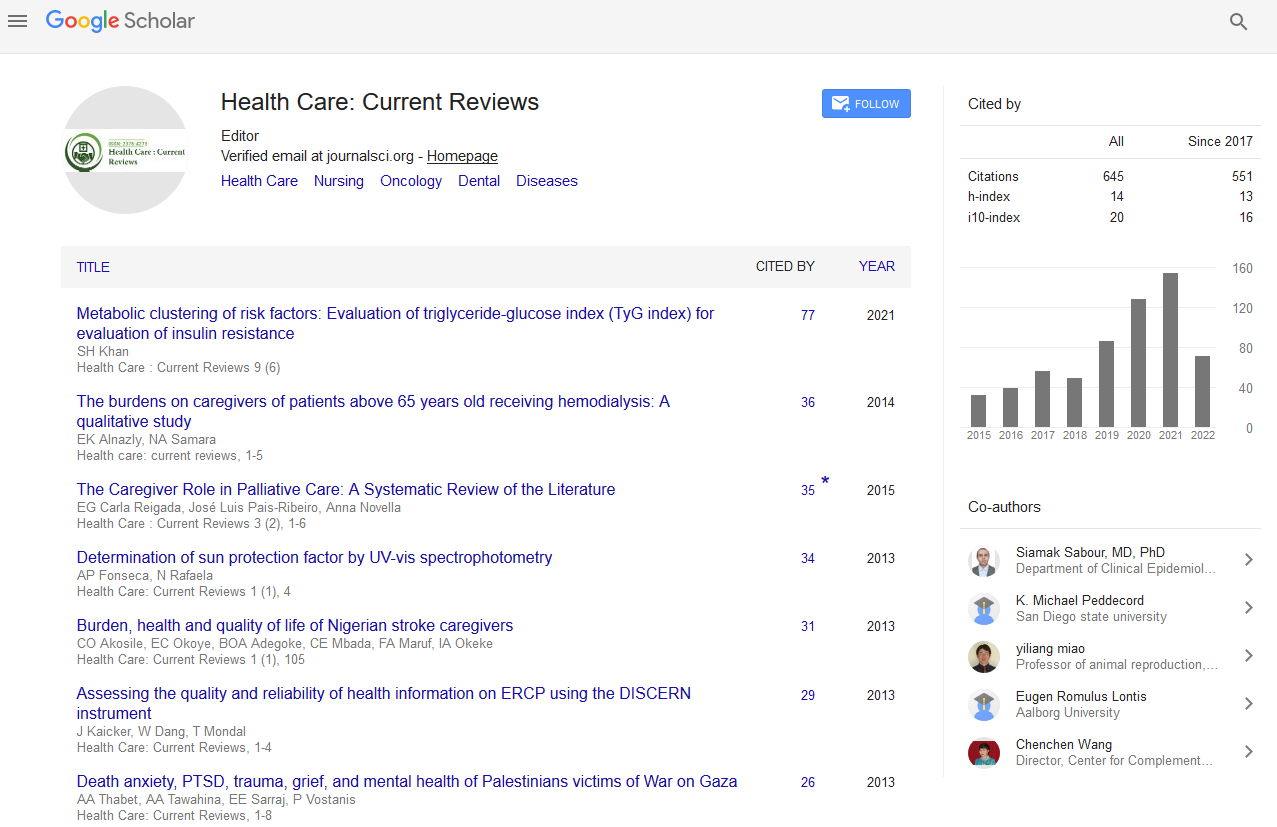PMC/PubMed Indexed Articles
Indexed In
- Open J Gate
- Academic Keys
- RefSeek
- Hamdard University
- EBSCO A-Z
- Publons
- Geneva Foundation for Medical Education and Research
- Google Scholar
Useful Links
Share This Page
Journal Flyer

Open Access Journals
- Agri and Aquaculture
- Biochemistry
- Bioinformatics & Systems Biology
- Business & Management
- Chemistry
- Clinical Sciences
- Engineering
- Food & Nutrition
- General Science
- Genetics & Molecular Biology
- Immunology & Microbiology
- Medical Sciences
- Neuroscience & Psychology
- Nursing & Health Care
- Pharmaceutical Sciences
Attitudes of paediatricians and general practitioners in diagnosing hypertension in children
2nd Annual Congress and Medicare Expo on Primary Care & General Pediatrics
September 19-20, 2016 Phoenix, USA
Ayedh A Alhajri
Kuwait University, Kuwait
Scientific Tracks Abstracts: Health Care: Current Reviews
Abstract:
Introduction: Hypertension is a major long-term health condition and it is the leading cause of premature death among adults throughout the world. Based on the use of �?�95th percentile to define hypertension, it would be expected that the prevalence of hypertension in children would be approximately 5%. Paediatric hypertension is considered as an under-diagnosed problem worldwide. This survey study was conducted to explore the extent of this issue in Kuwait. Subjects & Methods: A questionnaire, having a brief case history of a child with increased blood pressure was prepared. The case history was followed by 15 true/false/I do not know questions directed to the attending physician. The questionnaire also solicited information on the physician�??s current position and the length of his/her experience. The questionnaire was distributed to general practitioners working in 15 primary health care centers; all health districts in Kuwait were included. The same questionnaire was distributed to pediatricians working in the six main hospitals in Kuwait. Only assistant registrars and registrars were included. The questionnaire was collected in person from all participants of both groups. Results: A total of 127 physicians responded to the questionnaire. The responders were 69 (54%) male physicians and 58 (46%) female physicians. 44 (34.6%) of the responders were general practitioners and 13 (10.2%) were family medicine physicians working in polyclinics through-out the country (group A). 70 (55.2%) of the responders were paediatricians working in the six main hospitals in Kuwait. In terms of years of experience, 20 (15.7%) participants have five years or less, 35 (27.6%) have 5 to 10 years and 72 (56.7%) have more than 10 years of experience. No statistical significance were found in the responses of both groups except in two questions (Q2 and Q11, p values were 0.025 and 0.0038 respectively). Q2 and Q11 reflected the knowledge of proper paediatric cuff size and proper method of diagnosing hypertension in children respectively. Conclusion: Our results suggest that paediatric hypertension is likely to be under-diagnosed by general practitioners due to lack of both knowledge and clinical skills in measuring blood pressure. This mandates an extensive education programmes to train general practitioners.
Biography :
Ayedh A Alhajri is a first class honour Medical Student at the Royal College of Surgeons in Ireland. He is a Research Assistant at Kuwait University, Faculty of Medicine, Department of Pediatrics. He is the Founder of Kuwait Medical Students Team in Ireland which is functional since April 2014. He has contributed in two papers about Pediatrics so far.
Email: ayedhalhajri@rcsi.ie


